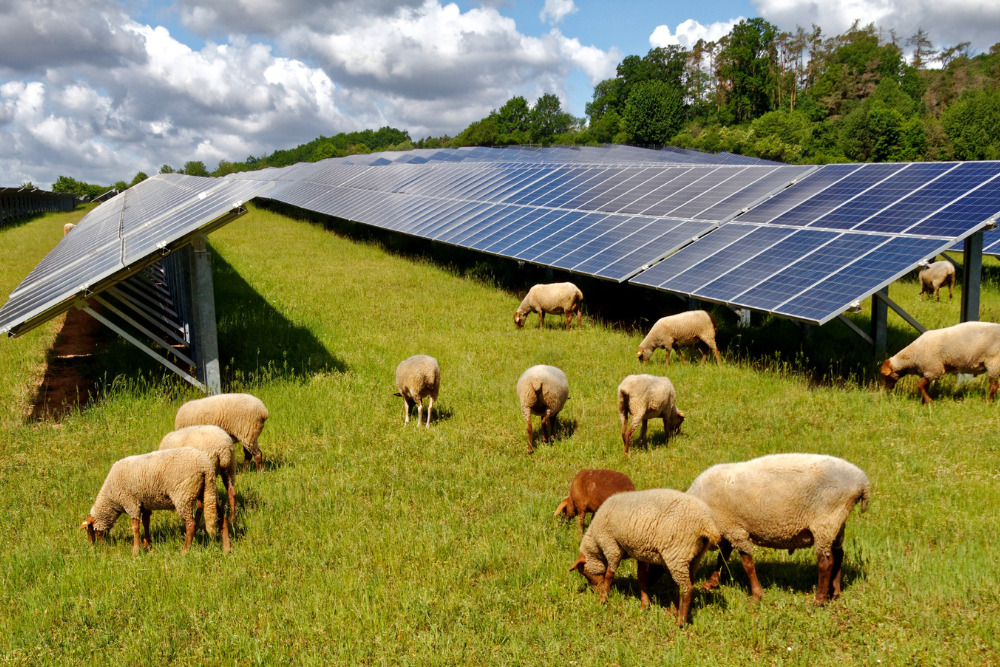Solar Energy Impact Wildlife and Ecosystems

Solar energy installations can impact wildlife and ecosystems in various ways, though the extent and nature of these impacts depend on factors such as the type of solar technology, project location, site design, and mitigation measures. Here are some ways in which solar energy can impact wildlife and ecosystems:
Habitat Loss and Fragmentation: Large-scale solar projects, such as utility-scale solar farms and solar parks, may require clearing of land, resulting in habitat loss and fragmentation for terrestrial species. Clearing vegetation can disrupt wildlife habitats, alter ecological dynamics, and displace native flora and fauna, particularly in sensitive ecosystems such as grasslands, forests, and wetlands.
Collision Risk for Birds and Bats: Solar energy installations, especially large-scale solar farms with expansive arrays of solar panels or concentrated solar power (CSP) facilities with tall power towers, may pose collision risks for birds and bats. Flying species may collide with solar panels, structures, or reflective surfaces, leading to injuries, mortality, and population declines, particularly during migration or nocturnal activity.
Disturbance and Displacement: Construction, operation, and maintenance activities associated with solar energy projects can cause disturbances to wildlife, including noise, vibration, and human presence. Machinery, vehicles, and infrastructure development may disrupt natural behaviors, breeding patterns, and foraging activities of wildlife species, leading to stress, displacement, and habitat avoidance.
Impacts on Water Resources: Some solar technologies, such as concentrated solar power (CSP) plants and solar photovoltaic (PV) projects with water-intensive cleaning systems, may have indirect impacts on water resources and aquatic ecosystems. Water consumption for cooling, cleaning, or dust suppression can affect local hydrology, groundwater levels, and water quality, potentially altering aquatic habitats and ecosystem functions.
Heat Island Effects: Large-scale solar installations, particularly concentrated solar power (CSP) plants and solar farms with dark-colored surfaces, can contribute to localized heat island effects, where solar radiation absorbed by solar panels and infrastructure increases surface temperatures in surrounding areas. Heat island effects may alter microclimates, vegetation patterns, and wildlife behavior, influencing species composition and ecological processes.
Light Pollution and Glare: Solar energy installations may contribute to light pollution and glare, particularly during nighttime or low-light conditions. Artificial lighting, reflective surfaces, and concentrated solar radiation from CSP plants can disrupt natural light cycles, disorient nocturnal species, and interfere with navigation, communication, and mating behaviors of wildlife.
Biodiversity Conservation: Despite potential negative impacts, solar energy projects can also contribute to biodiversity conservation and habitat restoration efforts. Designing solar installations with wildlife-friendly features, such as pollinator habitats, wildlife corridors, and native vegetation buffers, can mitigate habitat loss, support biodiversity, and enhance ecosystem resilience.
Mitigation and Best Practices: Implementing mitigation measures, such as site selection, habitat restoration, wildlife monitoring, and adaptive management, can minimize adverse impacts and maximize benefits of solar energy projects for wildlife and ecosystems. Collaborating with stakeholders, conducting environmental assessments, and adhering to regulatory requirements are essential for sustainable siting and operation of solar installations.
Overall, while solar energy offers significant environmental benefits compared to fossil fuel-based energy sources, it is essential to consider and address potential impacts on wildlife and ecosystems during project planning, implementation, and management. By integrating ecological considerations into solar energy development, adopting best practices, and implementing mitigation measures, countries and stakeholders can minimize environmental risks and enhance the compatibility of solar energy with biodiversity conservation and ecosystem protection goals.
Thank you,